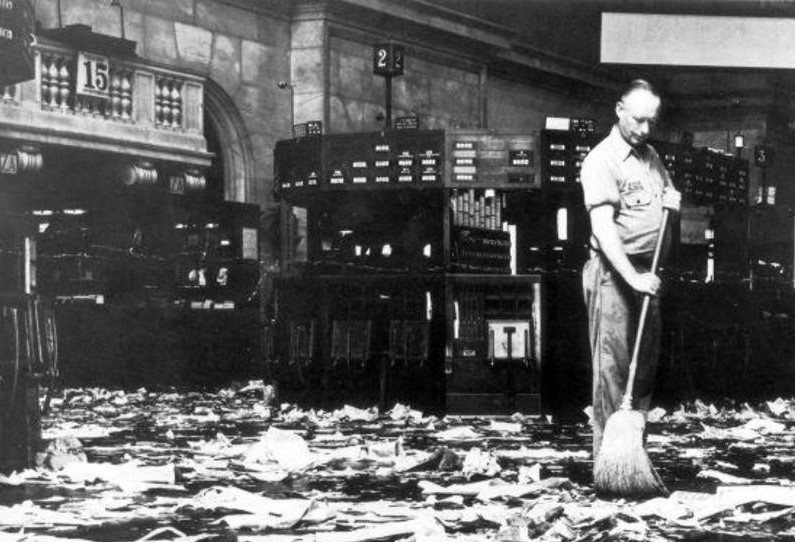Six Days in October, Plus Three Years
October 2, 2019

In a special history series, we look at the 1929 stock market crash, its causes and repercussions.
Julie Barton, Compliance Manager
This month marks 90 years since the stock market crash of 1929. We tend to look back on the crash as a one-day event; in truth, the stock markets suffered much damage over a span of six days in October, yet the crash continued its slow burn until 1932. What caused the crash and its repercussions are stories we will cover in other installments of the series.
On Black Thursday, October 24th, 1929, the market lost 11% of its value at the start of the trading day. The volume of trading was so heavy the ticker tape couldn't keep current. The backlog in the pricing flow left investors throughout the country unable to assess the prices at which their stocks were actually trading, which increased the panic. The pricing slide was halted after a group of bankers (representing Morgan Bank, Chase National Bank and National City Bank of New York) stepped in to shore up the market by purchasing large blocks of shares in blue chip stocks - a tactic that had effectively ended the 1907 panic. By the end of the day, the Dow Jones Industrial Average (DJIA) closed down only 6.38 points from the previous day. The stabilization continued through the rest of the trading week and the DJIA closed on Saturday, October 26th at 298.97. The market thought it had a chance to breathe.
However, on Monday, October 28th, investors found that they were facing large margin calls after the prior week's hectic and panicked trading - many banks at the time required only 10% down from investors purchasing stocks on margin - and they were determined to get out before their losses escalated. By the end of the trading day, the DJIA had a record loss of 38.33 points or 13%. Black Monday had arrived.
October 29th, Black Tuesday, began with unprecedented trading volumes and investors scrambled to get out while they could - about 16 million shares were traded and some sellers could not find anyone willing to buy their stocks at all. Again, leaders in the financial world attempted to shore up the market by buying large quantities of stock to demonstrate consumer confidence - it didn't work. The trading volume was so large that purportedly the ticker tapes didn't finish reporting until 7:45 p.m. The DJIA closed that Tuesday at 230.07, down over 30 points.
The market attempted multiple recoveries but the fall continued its downward trajectory until reaching its absolute bottom on July 8, 1932, when the DJIA closed at 41.22: a 89% loss from the high it had reached in September 1929. The 1930s began the slow - yet continual - market recovery. That said, there is slow and there is s-l-o-w; the Dow didn't see 381 points again until 1954.
Sources
Bierman Jr., Harold, The 1929 Stock Market Crash, EH.Net Encyclopedia, March 26, 2008
D'Anton, John, Flashback Friday: NYSE Trading Hours, Market Media, March 16, 2018
Dow Jones Industrial Average History, fedprimerate.com
The Economic Times, Market Crash of 1929: Some Facts of the economic downturn, October 22, 2017
Gailbraith, John K., The Great Crash 1929, 1972